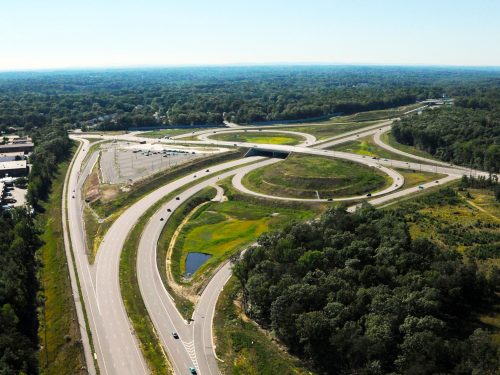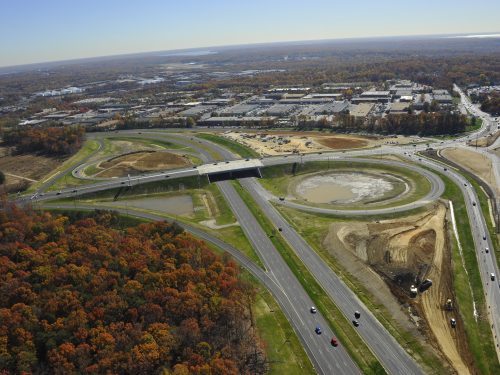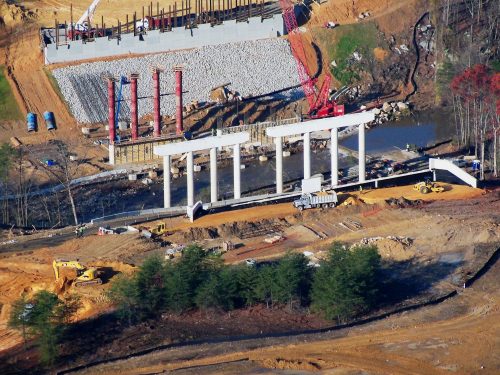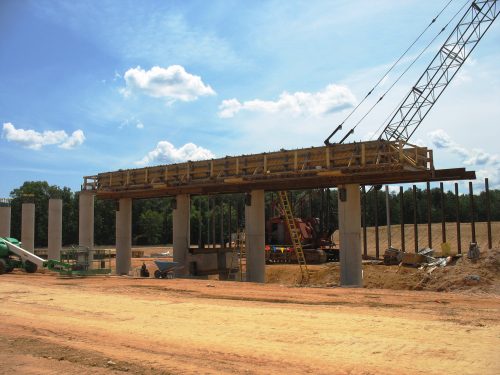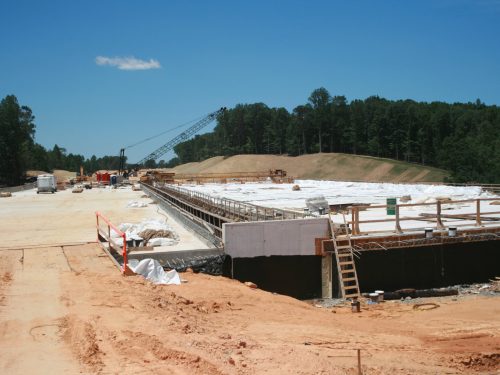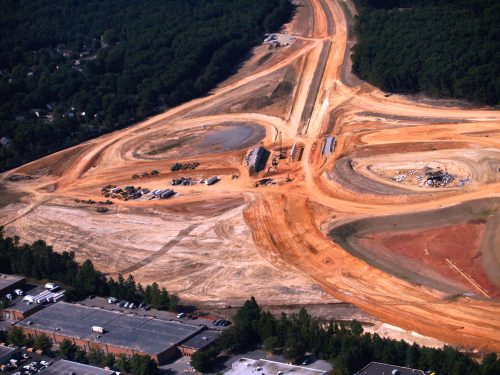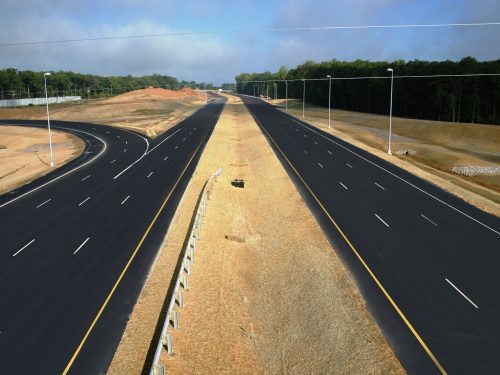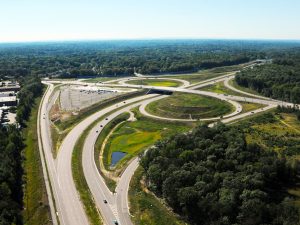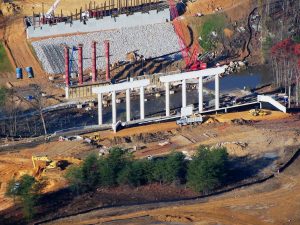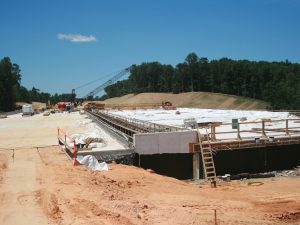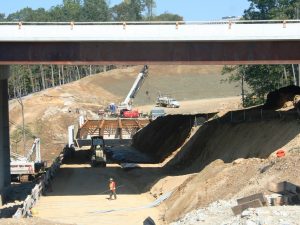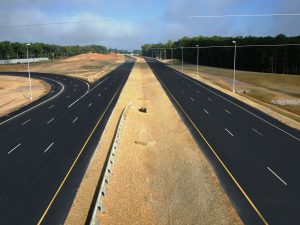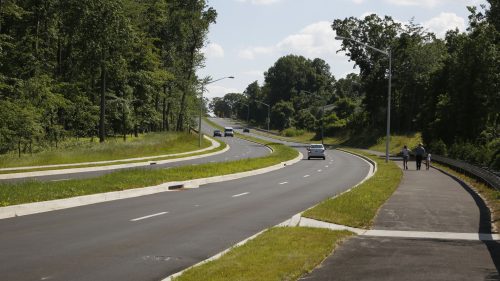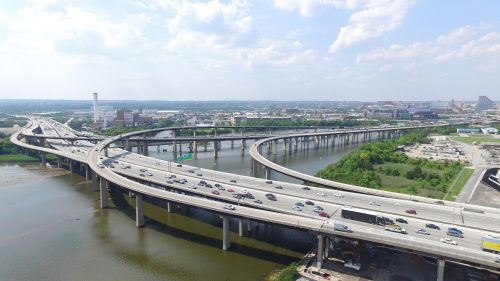Fairfax County Parkway, Phases I, II & IV
Fairfax County Parkway, Phases I, II & IV
The Fairfax County Parkway (FCP) completed a vital link to I-95 in northern Virginia. This $112 million design-build project was highly publicized as critical to the success of the region’s Base Realignment and Closure (BRAC) initiative, as it provided the needed highway improvements to address traffic impacts of the U.S. Army relocating 8,500 jobs to the National Geospatial-Intelligence Agency (NGA) Campus East at the Fort Belvoir North Area.
This fast-tracked project included many environmental challenges, such as the presence of contaminated soil/groundwater, and possible unexploded ordnance in the Fort Belvoir Engineering Proving Ground which the alignment traversed. The parkway crossed five former firing ranges and testing sites, including three Resource Conservation and Recovery Act sites that had significant groundwater and soil contamination, and stringent Land Use Controls required by an EPA Consent Order to protect human health and the environment. These environmental issues required special coordination with Fort Belvoir environmental staff as well as environmental permitting with the U.S. Army Corps of Engineers for bridge construction over Accotink Creek. All environmental impacts were successfully addressed.
During the bidding process, JMT prepared Alternate Technical Concepts that improved the overall project design and provided significant reductions in construction costs.
Project phases were completed sooner than scheduled, allowing them to be opened to traffic months ahead of their planned dates. President Obama made two visits to the project, initially to indicate the importance of the project to the Northern Virginia roadway network, and secondly for Phase IV, which was heralded for the project’s timely and effective use of ARRA funds.
Major components of this project included:
Highways & Bridges – Design of roadways; interchanges; four new bridges; one bridge widening and a multipurpose trail alongside a portion of the road; retaining walls; sound walls; maintenance of traffic; signing; and lighting.
Traffic Engineering/ITS – JMT performed traffic analysis and the design of roadway lighting associated with the construction of the Fairfax County Parkway. Traffic analysis consisted of Highway Capacity and SYNCHRO analysis. This included the design of full and partial interchange lighting and crossroad lighting. JMT prepared base plans, determined right-of-way and easements required, and completed layout of poles and conduits.
Water Resources Management – JMT was responsible for the hydraulic and hydrologic analysis and scour analysis report. The project was located in a detailed FEMA study area and involved several structures, as well as the upstream and downstream extension of an existing 1,000-foot-long box culvert over Fieldlark Branch that required a plunge pool design due to high velocity. To save the contractor the cost of additional fill material if the culvert was extended downstream maintaining the same culvert slope, the culvert downstream extension was dropped by four feet and analyzed using the Broken-back Culvert Program (BCAP).
Utility Designating and Locating – JMT performed various surveying and utility designating and locating tasks. Specific surveys included the establishment of survey control using GPS, utility designation, records research, and CADD design file compilation of the on-site existing utilities.
Public Outreach – JMT graphic artists developed and provided presentations and displays for community meetings, including detailed renderings and drawings. A project website was created to include login for file uploading to secured and public area.
JMT received five awards for the Fairfax County Parkway project: a Merit Award from American Council of Engineering Companies of Virginia, an Honor Award from American Council of Engineering Companies of Maryland, a Transportation Engineering Award from the Virginia Transportation Construction Alliance, an Honor Award for Excellence from the American Council of Engineering Companies of Metropolitan Washington, and the Merit Award under the “Transportation Projects” category from the Design-Build Institute of America.
